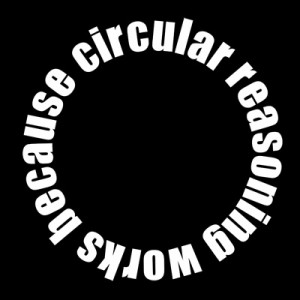For a moment, let’s try to imagine a world that isn’t our own. In this world, the intentions behind an act are completely disregarded when it comes to judging that act morally; the only thing that matters is the outcome. In this world, a man who trips and falls down the stairs, accidentally hitting another man on the way down, is just as wrong as the man who walks up to another and angrily punches him right in the face. In another case, a sniper tries to assassinate the president of the country, but since he misses by an inch no one seems to care.
Such a world would be a strange place to us, yet our sense of disgust seems to resemble the psychology of that world to some degree. While intent doesn’t stop mattering altogether when it comes to disgust, it would seem to matter in a different way than is typically envisioned when it comes to the domain of physical harm.
Sure, it may look disgusting – morally or otherwise – but who doesn’t love Red Velvet?
A recent paper by Young & Saxe (2011) set out to examine the role that intentions placed in the contexts of a more physical harm – poisoning – relative to their role in contexts that elicited disgust – the ever popular case of sibling incest. Subjects read stories in which incest was committed or a friend served another friend peanuts despite knowing about their friend’s peanut allergy; for these stories there was a bad intent and a bad outcome. When both acts were committed intentionally, harm tended to be rated as slightly more morally wrong than incest (6.68 vs 6.03, out of 7). However, the story changed when both acts were committed by accident – when there was still a bad outcome, but only neutral intentions. While the harm condition was now rated as not very wrong, the incest condition was still rated as fairly wrong (2.05 vs 4.24, out of 7).
Another study basically replicated the results of the first, but with one addition: there was now an attempt condition in which an actor intends to commit an act (either harm someone or commit incest), but fails to do so. While the intentional condition (bad intent and bad outcome) was rated as the worst for both incest and harm, and the accidental condition (neutral intent and bad outcome) saw incest rated as worse than harm, the attempt condition showed a different pattern of results: while attempted harm was rated to be just as bad as intentional harm (6.0 and 6.5, respectively), attempted incest was rated more leniently than intentional incest (4.2 and 6.4). In other words, moral judgments of incest were more outcome dependent, relative to moral judgments of harm.
One final study on the topic looked at two different kinds of failed attempts concerning incest and harm: the ‘true belief but failed act’ and the ‘false belief but completed act’. The former involved (in the case of incest) two siblings correctly believe they’re siblings and attempt to engage in intercourse but are interrupted before they complete the act. The latter involved two people who incorrectly believe they’re siblings and actually engage in intercourse. The harm contexts were again outcome independent: whether the harm was completed or not didn’t matter. However, the incest contexts told a different story: the ‘true belief but failed act’ condition was rated as being more immoral than the ‘false belief but completed act’ condition (5.65 vs 4.2). This means subjects were likely rating the act relative to how close it approximated actual incest, and the subjects apparently felt an unconsummated attempt at real incest looked more like incest than a consummated act where the two were just mistaken about their being siblings.
And I think we can all relate to that kind of disappointment…
A further two studies in the paper sought to examine two potential ways to account for this effect. In one case, subjects rated the two stories with respect to how emotionally upsetting they were, how much control over the situation and knowledge of the situation the actors had, and the extent to which the agents were acting intentionally. In no case were there any significant differences, whether concerning disgust or harm, or whether the act was intentional or accidental. The subjects seemed to be assessing the two stories in the same fashion. The second study sought to examine whether subjects were using moral judgments to express the disgust they felt about the story, rather than actually judging the act to be immoral. However, while subjects rated intentional incest as worse than accidental incest, they rated both to be equally as disgusting. Accordingly, it seems unlikely that people were simply using the morality scale as a proxy for their disgust.
It is my great displeasure to have to make this criticism of a paper again, but here goes: while the results are interesting,Young & Saxe (2012) really could have used some theory in this paper. Here’s their stated rationale for the current research:
Our hypothesis was initially motivated by an observation: in at least some cultures, people who commit purity violations accidentally or unknowingly are nevertheless considered impure and immoral.
Observing something is all well and good, but to research it, one should – in my opinion – have a better reason for doing so than just a hunch you’ll see an effect. The closest the authors come to a reasonable explanation of their findings – rather than just a restatement of them – is found in the discussion section, and it takes the form of a single sentence, again feeling like an afterthought, rather than a guiding principle:
…[R]ules against incest and taboo foods may have developed as a means for individuals to protect themselves, for their own good, from possible contamination.
Unfortunately, none of their research really speaks to that possibility. I’d like to quickly expand on that hypothesis, and then talk about a possible study that could have been done to examine it.
Finding an act disgusting is a legitimate reason to not engage it yourself. While that would explain why someone might not want to have sex with their parents or siblings, it would not explain why one would judge others as morally wrong for doing so. For instance, I might not feel inclined to eat insects, but I wouldn’t want someone else punished because they enjoyed doing so. However, within the realm of disgust, the threat of contamination looms large, and pathogens aren’t terribly picky about who they infect. If someone else does something that leads to their becoming infected, they are now a potential infection risk to anyone they interact with (depending on how the pathogen spreads). Accordingly, it’s often not enough to simply avoid engaging in a behavior yourself; one needs to avoid interacting with other infected agents as well. One way to successfully deter people from interacting with you just happens to be aggressive behavior. This might, to some extent, explain the link between disgust and moral judgments. It would also help explain the result that disgust judgments are outcome dependent: even if you didn’t intend to become infected with a pathogen, once you are infected you pose the same risk as someone who was infected more intentionally. So how might we go about testing such an idea?
While you can’t exactly assign people to a ‘commit incest’ condition, you could have confederates that do other potentially disgusting things, either intentionally or accidentally, or attempt to do them, but fail (in both cases of the false or true beliefs). Once the confederate does something ostensibly disgusting, you assign them a partner in one of two conditions: interacting at a distance, or interacting in close proximity. After all, if avoiding contamination is the goal, physical distance should have a similar effect, regardless of how it’s achieved. From there, you could compare the willingness of subjects to cooperate or punish the confederate, and check the effect of proximity on behavior. Presumably, if this account is correct, you’d expect people to behave less cooperatively and more selfishly when the confederate had successfully done something disgusting, but this effect would be somewhat moderated by physical distance: the closer the target of disgust is, the more aggressive we’d expect subjects to be.
One final point: the typical reaction to incest – that it’s morally wrong – is likely a byproduct of the disgust system, in this account. Incestuous acts are, to the best of my knowledge, no more likely to spread disease than non-incestuous intercourse. That people tend to find them personally rather disgusting might result in their being hooked onto the moral modules by proxy. So long as morally condemning those who engaged in acts like incest didn’t carry any reliable fitness costs, such a connection would not have been selected against.
References: Young, L., & Saxe, R. (2011). When ignorance is no excuse: Different roles for intent across moral domains Cognition, 120 (2), 202-214 DOI: 10.1016/j.cognition.2011.04.005


























